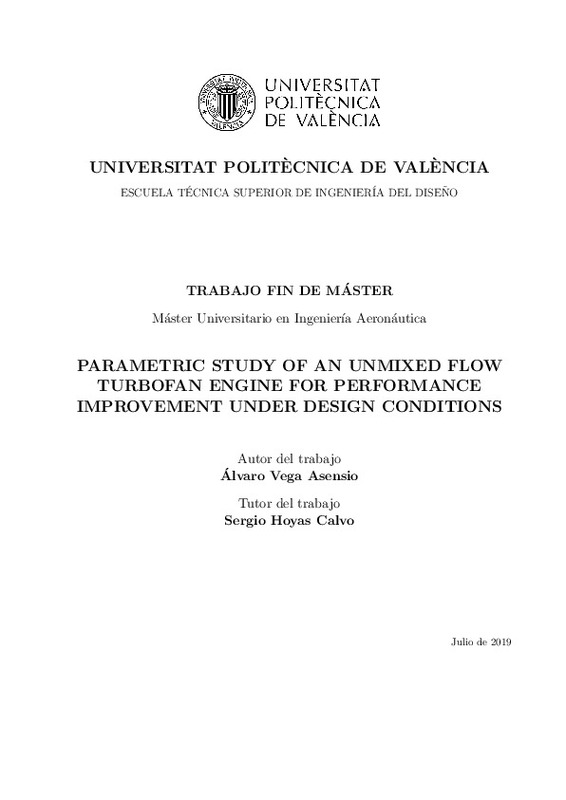|
Resumen:
|
[ES] Desde que la aviación comenzara su andadura a comienzos del siglo XX, el desarrollo de una planta propulsora ha sido siempre clave en la evolución de esta disciplina: desde los primeros motores de combustión interna ...[+]
[ES] Desde que la aviación comenzara su andadura a comienzos del siglo XX, el desarrollo de una planta propulsora ha sido siempre clave en la evolución de esta disciplina: desde los primeros motores de combustión interna alternativos hasta los más modernos turbofan de flujo mezclado, en todos ellos se ha buscado la mejora de las prestaciones con la más adecuada gestión de los recursos posible. Hoy en día, y en el ámbito de la aviación comercial, dicha optimización versa sobre la reducción del consumo del motor, a la vez que se garantiza el empuje requerido por la aeronave. El trabajo llevado a cabo en el presente documento tiene como objetivo la mejora y optimización de las prestaciones de un motor de tipo turbofan de flujo separado en fase de crucero. Se seleccionarán los parámetros característicos del motor que modificar para encontrar el óptimo y se buscará una solución satisfactoria en términos de empuje y consumo específico, al mismo tiempo que se intentará reducir la relación peso-empuje del conjunto. Para el cálculo de prestaciones, se ha modelado analíticamente el ciclo termodinámico que envuelve al motor, mientras que para su optimización se ha empleado software especializado en el tema. Dicho estudio permitirá conocer las características del motor que idealmente permite volar de la manera más eficiente posible. Este proyecto se ha desarrollado con la ayuda de Wolfram Mathematica® y ModeFrontier®, mediante la creación de librerías que permite obtener de manera sencilla las prestaciones del motor cuyos parámetros característicos son introducidos por el usuario. Finalmente, se procede a validar y discutir los resultados obtenidos, aplicando literatura específica del tema y estudiando las variables que influyen en el fenómeno, con el fin de proporcionar unos resultados veraces y con aplicabilidad en el sector.
[-]
[EN] Since aviation began at the beginning of the 20th century, the development of a propulsion plant has always been a key factor in the evolution of this discipline: from the first internal combustion engines to the most ...[+]
[EN] Since aviation began at the beginning of the 20th century, the development of a propulsion plant has always been a key factor in the evolution of this discipline: from the first internal combustion engines to the most modern mixed flow turbofans, all of them have sought to improve performance with the most appropriate management of resources possible. Today, in the field of commercial aviation, this optimisation concerns the reduction of engine consumption, guaranteeing at the same time the thrust required by the aircraft. The work carried out in this document aims to improve and optimise the performance of a separate flow turbofan engine during the cruising phase. Engine characteristic parameters to be modified for the optimum search will be selected, and a trade-off between thrust specific fuel consumption and specific thrust will be found, attempting a the same time a reduction in the weight-to-thrust ratio of the whole. For performance calculation, the thermodynamic cycle surrounding the engine has been analytically modeled, whereas specialised software has been used to optimise it. This study will allow the knowledge of the characteristics of the engine that ideally allow to fly in the most efficient way. This project has been developed with the help of Wolfram Mathematica\textsuperscript{\textregistered} and ModeFrontier\textsuperscript{\textregistered}, through the creation of libraries that allow to obtain in a simple way the engine features whose design parameters are introduced by the user. Finally, validation and discussion of the results are conducted, applying specific literature on the subject and studying the variables that influence the phenomenon, in order to provide truthful results with applicability in the sector.
[-]
|







